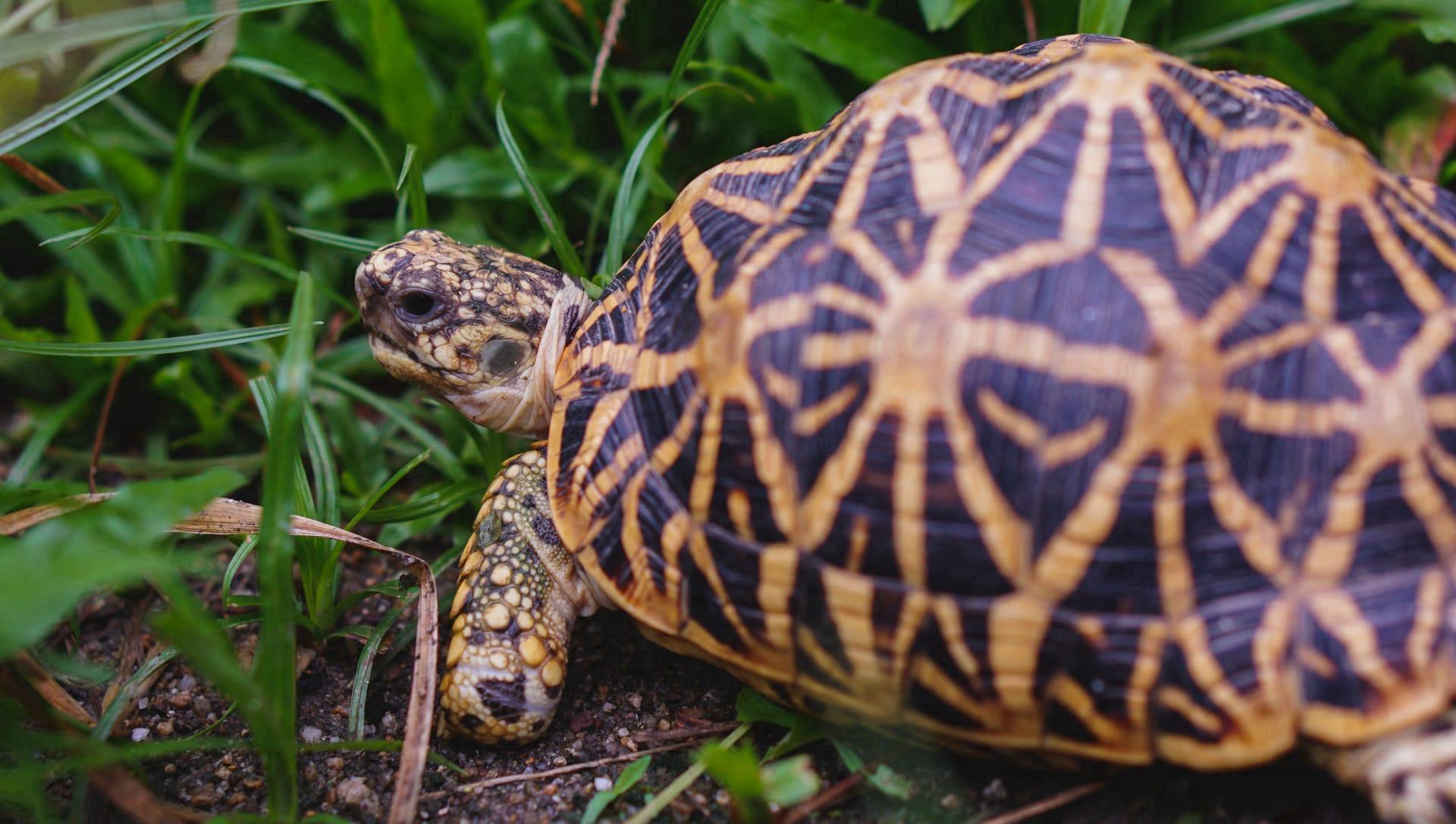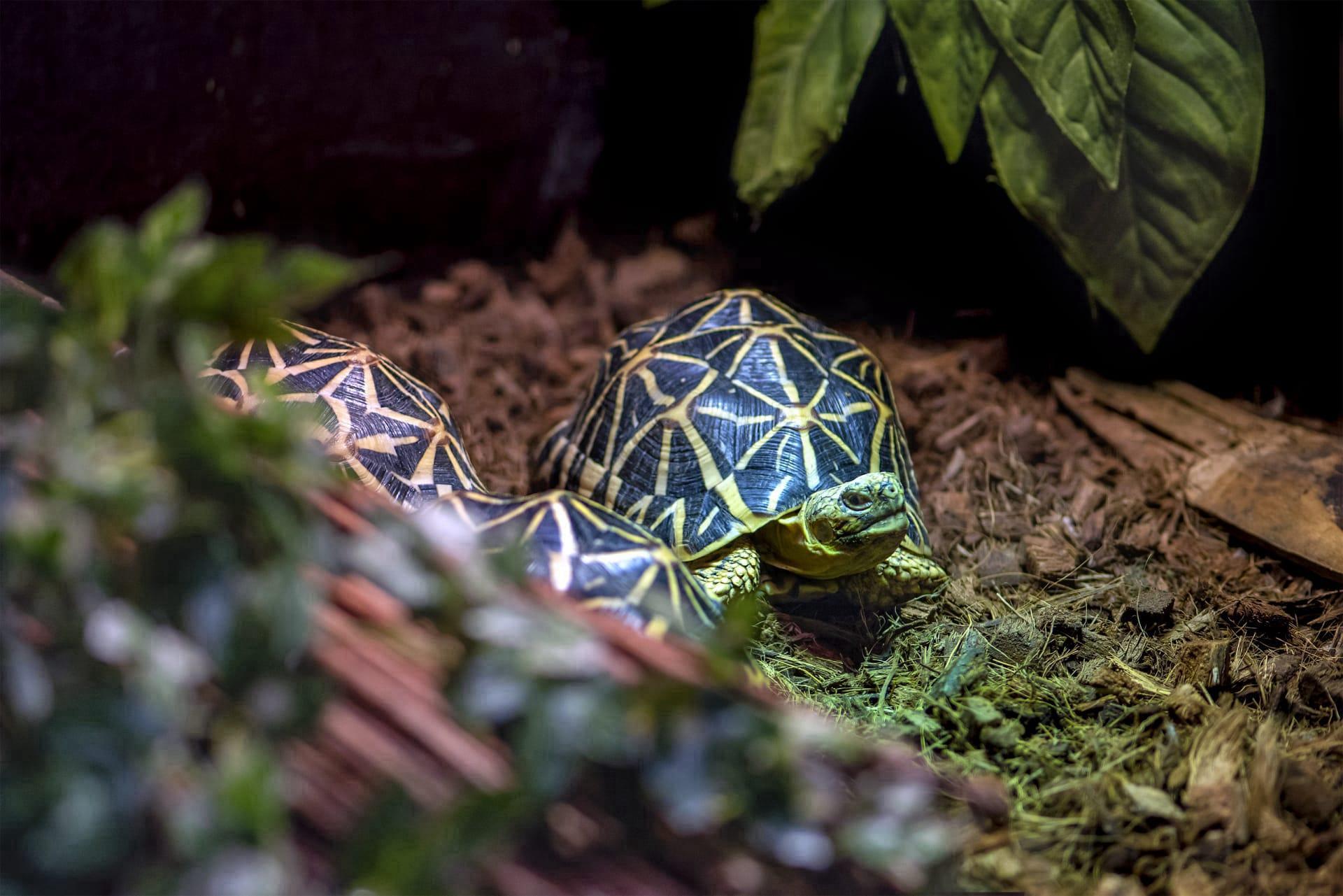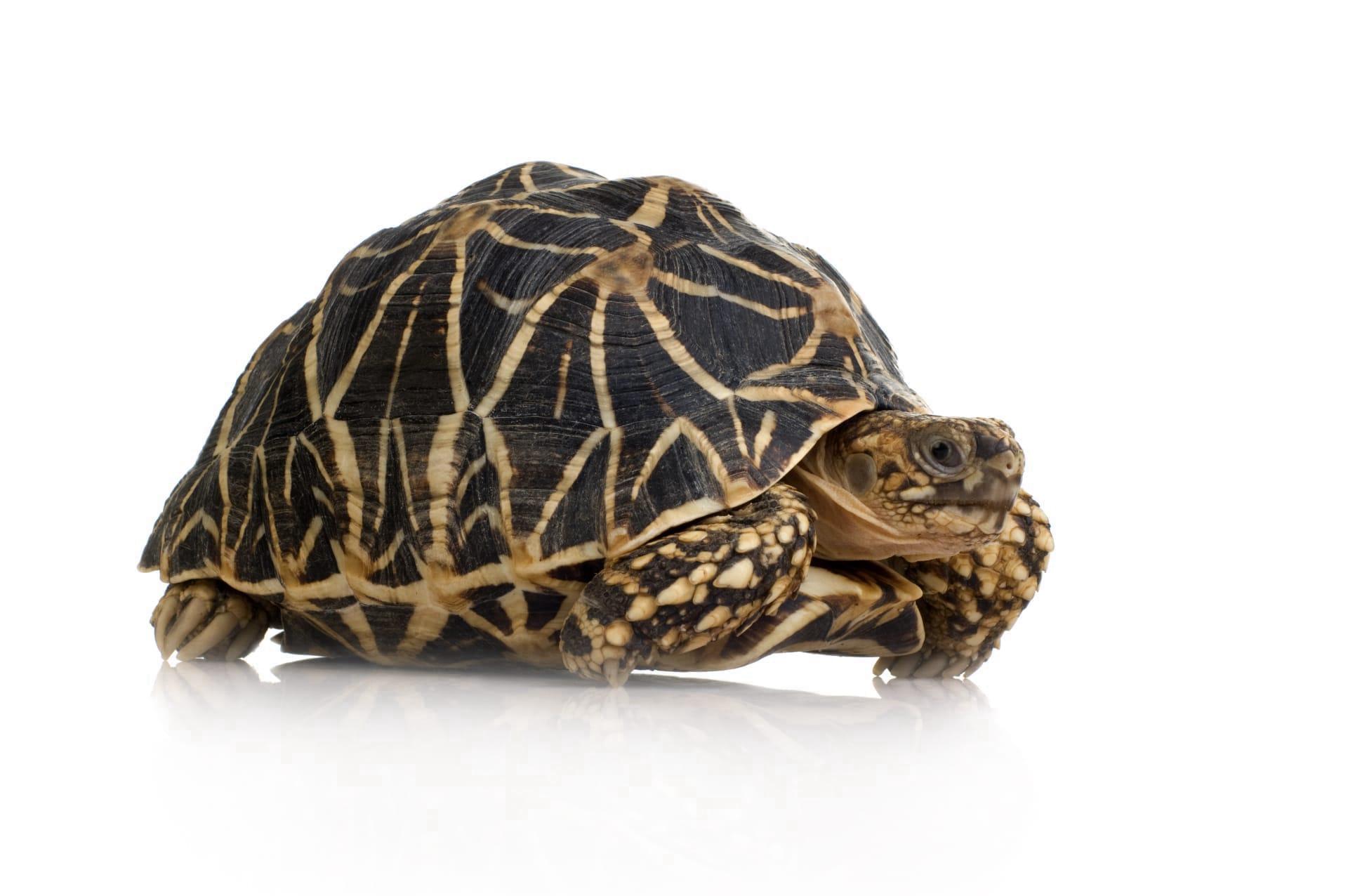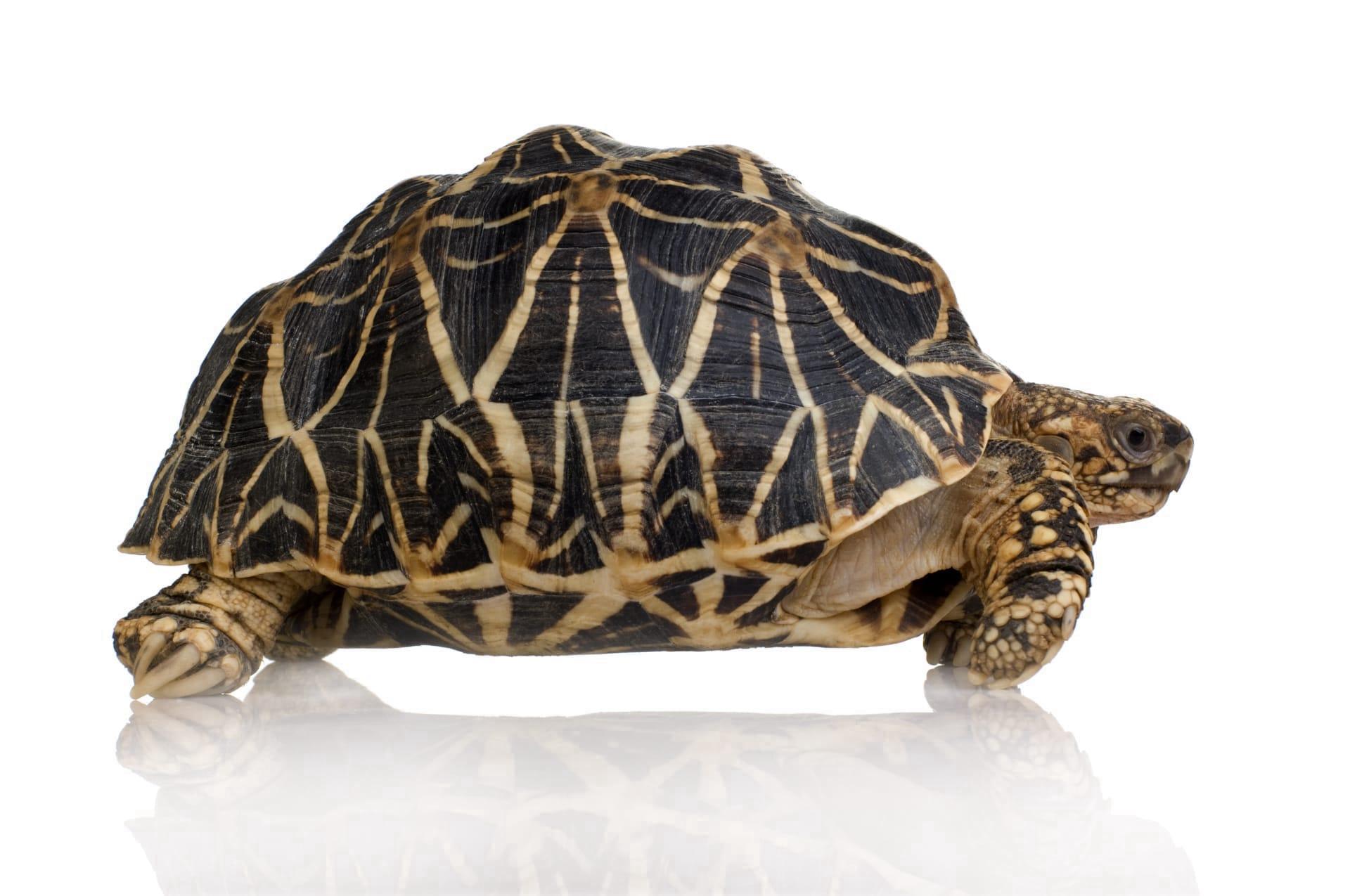1
The Indian Star Tortoise, known for its star-patterned shell, is a small to medium-sized species with an adult carapace (shell) length averaging about 6 to 11 inches (15 to 28 cm). This distinctive star pattern is not just for show; it's a clever camouflage strategy. The radiating yellow lines on a dark background mimic the shadows and sunlit patches of their natural forest and grassland habitats, making it harder for predators to spot them.
These tortoises exhibit sexual dimorphism, meaning males and females look different. Females generally grow larger, reaching up to 11 inches (28 cm) in length, while males typically max out around 8 inches (20 cm). The males have a concave plastron (the underside of the shell) which aids them in mounting the females during mating. This characteristic is a fantastic example of how physical traits can evolve to support specific behaviors in animal species.

2
Indian Star Tortoises are herbivores with a diet consisting mainly of grasses, flowers, and fruits. In captivity, they often enjoy a diet of leafy greens, vegetables, and fruits. Their eating habits are quite fascinating; they prefer grazing slowly and steadily throughout the day rather than having large meals at once. This grazing pattern is similar to how they would eat in the wild, moving from one food source to another, mimicking their natural foraging behavior.
Another interesting aspect is their longevity. These tortoises can live up to 80 years, though the average lifespan is around 35-55 years. Their long lifespan is testament to their hardy nature and the effectiveness of their slow, steady approach to life. This means, in human care, they can be a long-term commitment, often outliving their initial owners. It's a profound reminder of the responsibility that comes with caring for such long-lived creatures.

3
Indian Star Tortoises have a unique way of defending themselves. When threatened, instead of retracting their head and limbs completely inside their shell, they tuck them sideways. This sideways tucking makes it difficult for predators to get a grip on their extremities. This behavior showcases an adaptation to the specific threats they face in their natural habitat, which includes predators like large birds and small mammals.
They are also known for their specific breeding behaviors. Indian Star Tortoises breed during the rainy season when food is abundant. Females lay multiple clutches of eggs each year, with each clutch containing up to 10 eggs. The eggs are deposited in a nest dug in the soil and incubated for about 60-90 days before hatching. This reproductive strategy aligns with the environmental conditions, ensuring the hatchlings have a better chance at survival with ample food and water available.

4
The Indian Star Tortoise's shell is not just a defense mechanism; it's also a climate control system. The shell's ability to reflect sunlight helps in regulating their body temperature in the hot environments they inhabit. This is crucial as tortoises are ectothermic, relying on external sources to regulate their body temperature. The shell's design, with its high dome shape, also allows air to circulate underneath, which further aids in cooling.
These tortoises have a strong sense of smell which they use to locate food. Their olfactory abilities are so refined that they can distinguish between different types of food and even find food buried under soil. This sense of smell is vital for their survival in the wild, where food sources can be scattered and not always visible.

5
Indian Star Tortoises have a unique response to rain. They are known to become more active and display a behavior known as "rain dancing" during and after rainfall. This involves walking around with an outstretched neck and swaying their body. This behavior is thought to help them wash off dirt and parasites from their body. Rain is a crucial element in their habitat, signaling the availability of fresh food and indicating the breeding season.
Lastly, these tortoises are unfortunately victims of illegal pet trade due to their attractive appearance and relatively small size. This has led to their categorization as "Vulnerable" by the IUCN Red List. Conservation efforts are in place to protect them, focusing on habitat protection and cracking down on the illegal trade. This situation highlights the importance of ethical wildlife practices and the need for awareness regarding the impact of pet trade on wild populations.